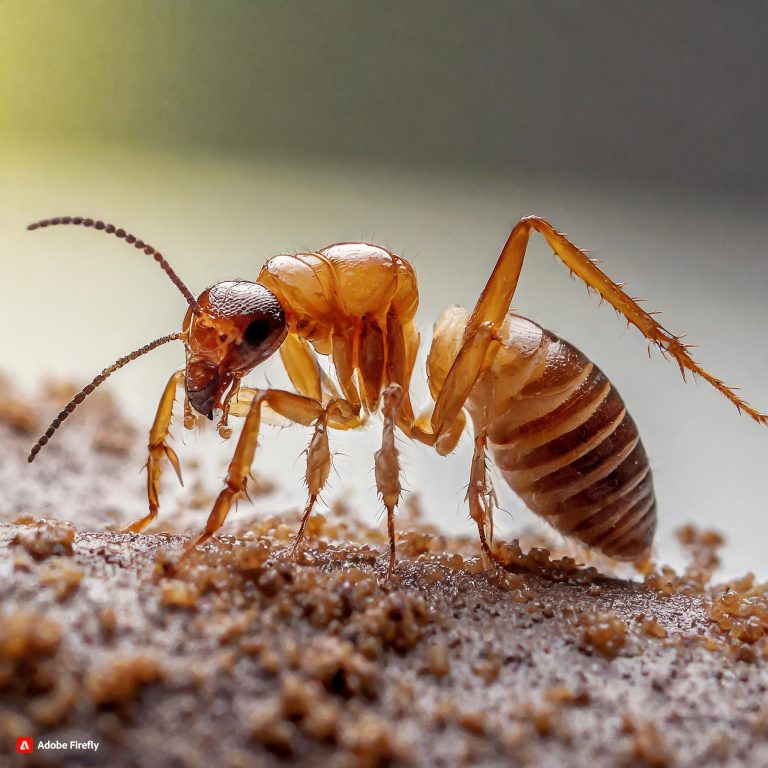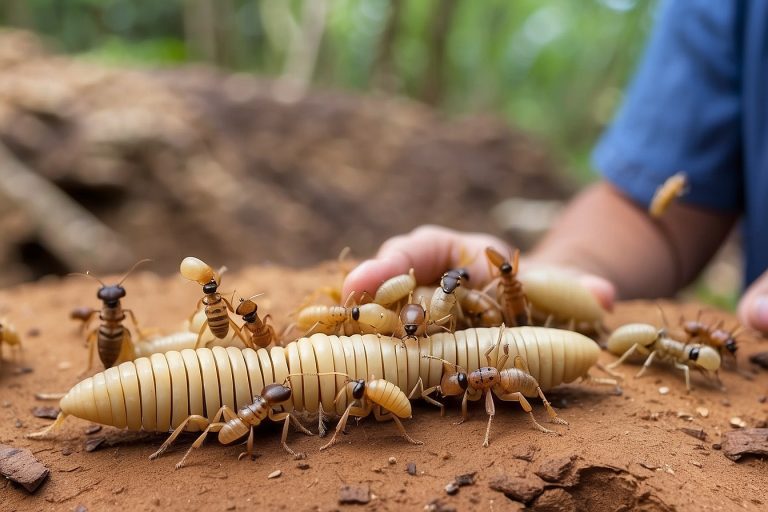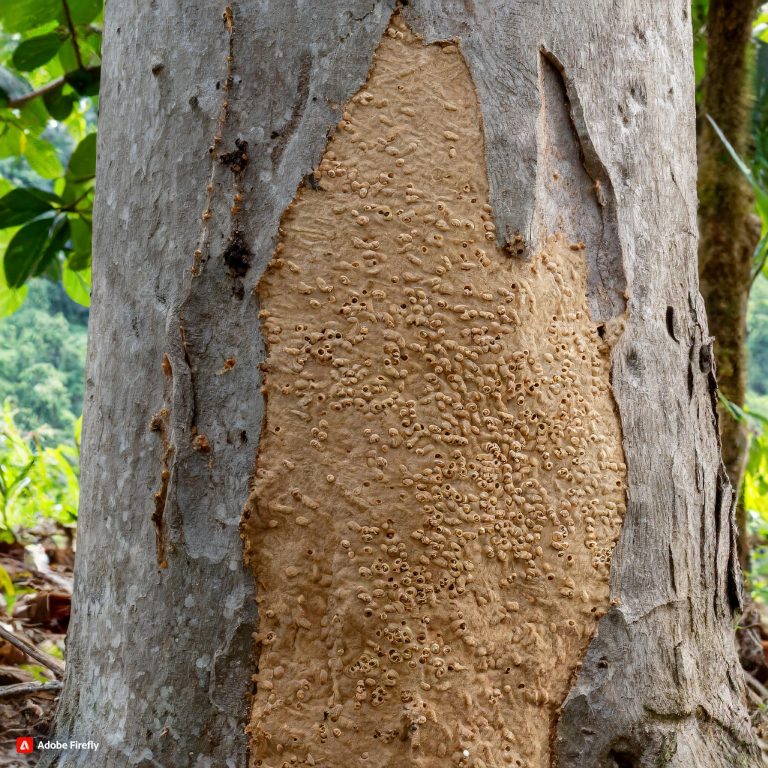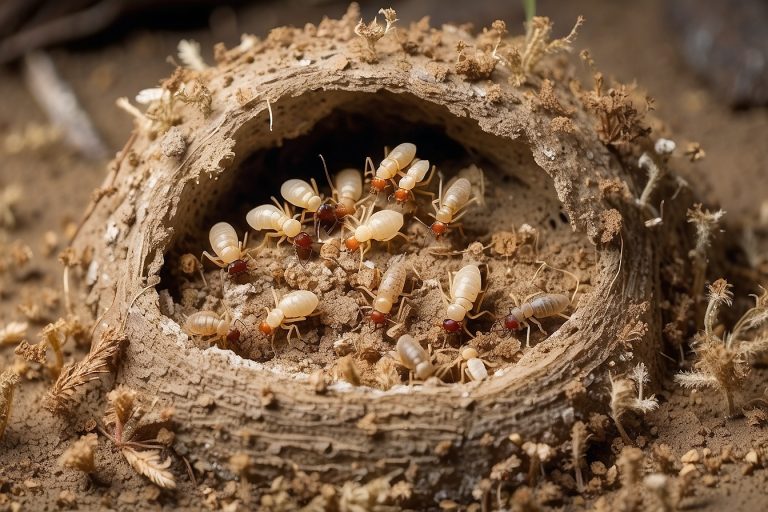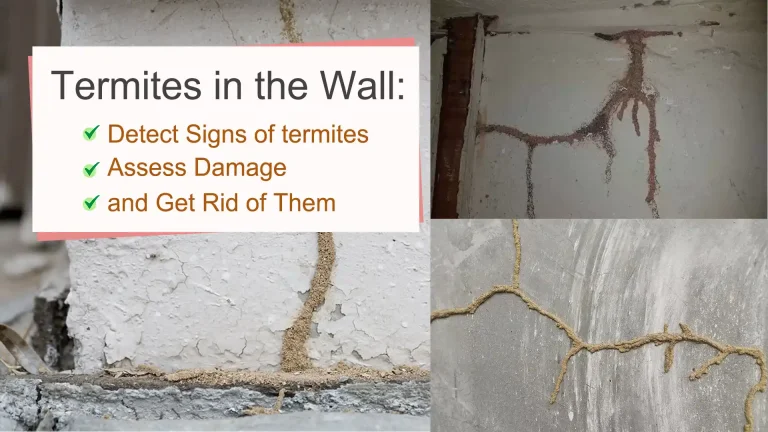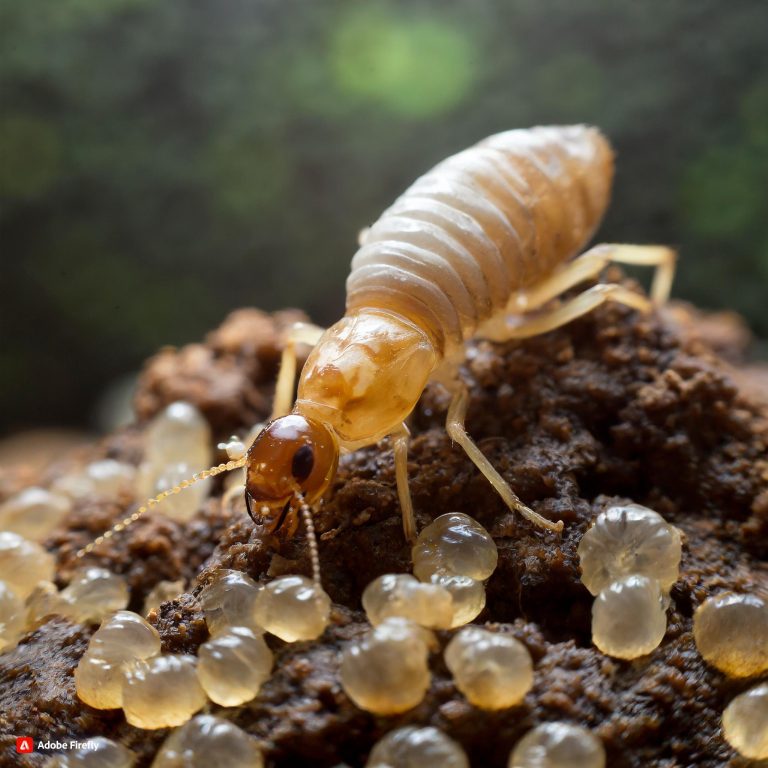Signs of Termites in Yard: How to Spot Them
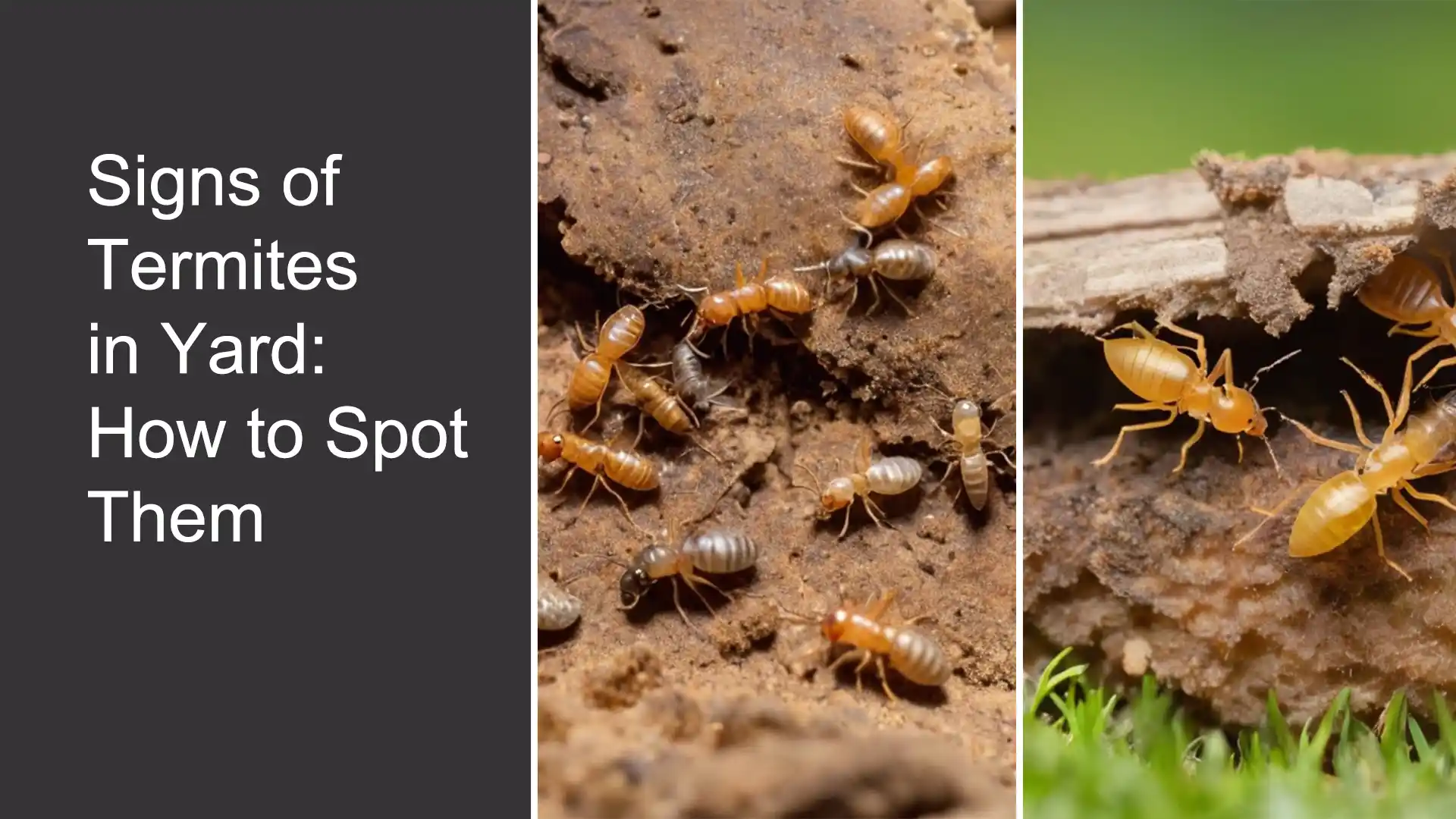
- Key Signs of Termites in Yard
- Identifying Different Termite Species
- Inspecting Your Yard and Home Exterior for Termites
- Termite Prevention Tips
- Signs of Termites at Night
- 8 Ways to Get Rid of Termites in Your Yard
- How To Get Rid Of Termites In A Tree Stump
- How to Get Rid of Termites on Grass
- FAQs about Termites in Yards
- Summary of Key Points: Signs of Termite Infestations in Yards
Termites are destructive pests that can cause severe damage to the wooden structures of your home. An infestation often goes unnoticed in its early stages, so it’s important for homeowners to know the signs of termites and inspect their yard regularly. This guide covers how to spot the early signs of termites in your yard, identify different termite species, check for damage, and have a professional termite inspection done before the infestation spreads.
Key Signs of Termites in Yard
Here are some of the most common signs of termites you may spot right in your own yard:
- Mud tubes – Small tunnels of mud running up the side of your home’s foundation or along walls, fences, tree stumps etc. Mud tubes protect termites from sunlight and open air as they travel to and from their colony.
- Swarmers – During spring or summer when a mature termite colony swarms, you may see swarmers (winged termites) flying around outdoor lights or congregating by window sills. Swarmers fly off to mate and start a new colony.
- Damaged wood – Trees, stumps, wood piles, or structural lumber with cracked/peeling bark or wood that seems tunneled, hollowed out or riddled with holes. This happens when termites bore into wood to feed.
- Discarded wings – After swarmers mate and lose their wings, you may find small piles of discarded termite wings around your yard, garden, sidewalk etc.
If you spot any of these termite signs in or around your yard, it likely indicates an active infestation located very close by.
Identifying Different Termite Species
There are several species of termites commonly found infesting yards and homes. Identifying the type of termite can determine how they get into your home and yard. Common termite species include:
- Subterranean termites – Most common type in yards/homes. Known for building extensive mud tube networks from their underground colonies in soil up into the wooden structures of a home. Reticulitermes and Coptotermes are common subterranean genera.
- Dampwood termites – Nest in and feed on moist, decaying, or fungus-infected wood. Common in wood piles, old tree stumps, landscape timbers etc. with excessive moisture.
- Drywood termites – Colonies live entirely inside dry wood without any soil contact. Infest wooden elements inside a home that do not have excess moisture.
Inspecting Your Yard and Home Exterior for Termites
Regularly checking your yard and home’s exterior for early warning signs can help discover termite activity before major damage is done. Here is what to look for:
Carefully Checking Wood Structures and Trees for Termites
- Inspect outdoor wood structures (sheds, decks, fences etc.), landscape timbers, tree stumps, wood piles, mulch beds, and trees closely for:
- Tunneled or hollowed wood
- Mud tubes running along surfaces
- Cracked/peeling bark
- Sawdust or termite droppings piling up
- Tap wood with a hammer – damaged wood will sound hollow vs solid wood.
- Use a screwdriver to poke at wood joints, seams, and damaged areas to check for hidden tunnels just under the surface.
Looking Inside Tree Stumps for Signs of Infestation
Rotting tree stumps make the perfect spot for termite colonies to establish. Carefully break apart decayed wood in old stumps to check for:
- Mud tunnels winding through inside the stump
- Live termites – white, soft-bodied insects with a slight bead-like shape
- Discarded termite wings around the stump
Having a Professional Termite Inspection
If you find signs of termites or just want peace of mind, have a professional pest control company thoroughly inspect your home and yard for termites. An expert can:
- Pinpoint the termite species
- Find the main colony location
- Check inside walls, attics etc. for hidden infestations
- Recommend the best treatment solutions like termite bait systems
Proactive annual inspections can catch infestations early before major damage is done.
Termite Prevention Tips
While termites need wood to survive, the following tips can make your yard and home less attractive to them:
- Eliminate excess moisture – Fix leaks, improve drainage near home.
- Ventilate damp crawl spaces, wood piles, and tree stumps.
- Clear mulch, grass, weeds, and dead leaves away from your home’s foundation walls.
- Store firewood on a paved or gravel surface off the ground, away from home exterior walls.
- Treat susceptible wood around the yard with borate solutions.
- Install termite-resistant materials like concrete foundations, steel posts, crushed granite ground cover etc.
Getting preventative soil treatment or termite bait system professionally installed around one’s home provides long-term colony elimination and damage prevention.
Signs of Termites at Night
Termites follow the moisture – they tunnel and travel in mud tubes to avoid desiccation. So termite activity definitely doesn’t stop when the sun goes down.
More visible nighttime signs of termites in your yard include:
- Swarmers congregating around bright outdoor lights – Winged reproductive termites are attracted to bright lights. Seeing them gathered around your porch or flood lights is a clear sign that a colony’s swarmers are taking flight in your yard.
- Seeing flying termites emerge from the ground at night – If you notice winged swarmers emerging from cracks in a patio, wooden garden bed or your lawn at night, it means a termite colony living just below ground has matured and is swarming.
- Mud tubes illuminated under external lighting – The mud tubing termites construct really stands out at night if lit up. Inspect the foundation walls, concrete slab edges, retaining walls etc around your home externally for mud tunnels if you suspect termites.
So turn on your porch lights and watch for signs of flying or crawling termites coming from the ground if you suspect an infestation in your yard at night.
8 Ways to Get Rid of Termites in Your Yard
If you discover an infestation of termites in your yard, taking swift and aggressive action is crucial. Here are 8 of the most effective ways to get rid of termites in your yard once and for all:
- Insecticide treatment – Applying fast-acting insecticidal dusts, foams or liquid concentrates directly into termite tunnels/nests and mounds found around the yard can eliminate colonies.
- Bait stations – Installing commercial termite bait stations loaded with slow-acting toxins around the yard that worker termites feed to the rest of the colony. This eventually wipes out the entire nest population.
- Nematode application – Using beneficial nematodes (microscopic worms) that penetrate termite bodies and introduce lethal bacteria, interrupting their ability to digest cellulose. Best for treating soil.
- Borates – Spreading borate powder on the soil or using borate solutions to directly treat lumber, stumps, and trees makes them highly toxic to termites who try to consume the cellulose.
- Extreme heat – Applying extreme heat via a large blowtorch to probes inserted deep into tree stumps harboring termites is lethal for termites.
- Wood removal – Physically removing and safely disposing of heavily termite-damaged wood around the yard including dead trees, stumps, timber landscaping etc. to erase prime food sources.
- Natural predators – Releasing or attracting insects that are natural predators of termites like ants, spiders, beetles etc. by planting certain floral varieties around the property.
- Resistant building materials – Replacing wood elements around the yard with termite-proof materials like treated lumber, plastic composites, steel posts etc. leaves them with no food source.
Additionally, here are 5 things you should NOT do when trying to get rid of termites yourself:
- Don’t disturb visible termite tunnels/nests before treatment – this just spreads them further.
- Avoid excess moisture near the home which attracts termites.
- Don’t allow wood/cellulose debris to accumulate in piles around the yard.
- Never use the “do nothing” approach hoping for the best if termites are confirmed on your property.
- Don’t tackle treatment without wearing appropriate protective equipment.
How To Get Rid Of Termites In A Tree Stump
If you need to remove an old tree stump infested with termites from your yard, here are the most effective solutions:
- Physically remove the entire stump along with attached root ball and soil
- Using commercial insecticide liquids poured directly into stump holes
- Intense spot heating of stump interior to ~150°F sustained for over an hour
- Injecting commercial nematode solutions deep into hidden stump tunnels
- Filling hollows fully with borate powder/crystals leaving no untreated cavities
- Encasing stump fully with a concrete cap to entomb termites inside with no exits
How to Get Rid of Termites on Grass
If you spot signs of termites tunneling through patches of grass:
- Inspect underground for colonies nested around/under grass root zones
- Apply insecticidal liquids or beneficial nematodes to soak deep into the soil
- Remove/replace patches of dead grass and soil with fresh pest-free topsoil
FAQs about Termites in Yards
What are the early signs of termites in my yard?
- Small mud tunnels running along your home’s foundation or wooden fences, posts etc.
- Swarmers emerging indoors or collecting around external lights between spring and early summer.
- Damaged wood that appears tunneled out or hollowed, with possible piles of sawdust accumulating underneath.
What do termite holes in the ground around my yard mean?
Small holes or cracks in your yard leading down under the surface likely mean there is an active underground termite colony nesting further below in the soil. Their underground colonies can severely undermine foundations over time.
Can I spot signs of termites in my yard at night?
Yes, swarmers are attracted to bright lights and may congregate around your outdoor lights. You may also see swarmers emerging from the ground through cracks in patios, wooden garden edging etc. at night during peak swarming season.
What should I do if I find live termites in my yard or garden?
Contact a professional pest control company immediately if you confirm live termites, as even a few termites found above ground likely means there is a much larger hidden colony nearby that needs to be eliminated before substantial damage is done.
Most importantly – if you do spot signs, have the yard and home inspected as soon as possible to nip the problem in the bud. The sooner termite activity is detected and properly treated, the more damage prevention can be achieved.
Summary of Key Points: Signs of Termite Infestations in Yards
- Mud tubes running along structures, fence posts etc indicate established termite colonies using covered mud tunnels to travel safely to and from their nest.
- Swarmers gathering on window sills or around outdoor lighting means a mature colony is sending out winged termites to mate and propagate new colonies.
- Damaged wood with crackling bark, hollowed out tunnels, accumulated piles of sawdust shows termites are actively feeding on wood – a major warning sign.
- Getting a thorough professional inspection done promptly allows early detection of how established the infestation may be around one’s home before the issue can amplify.
- Learning the common species can help determine treatment approach based on their nesting preferences.
- Following smart preventative measures makes it much less hospitable for destructive termites to infest the yard and home.
Being able to recognize the signs of early termite activity in and around the yard is crucial for every homeowner in order to help protect their valuable property on time. Don’t ignore the worrying indicators of nearby colonies as waiting too long allows their destruction to spread dramatically.

